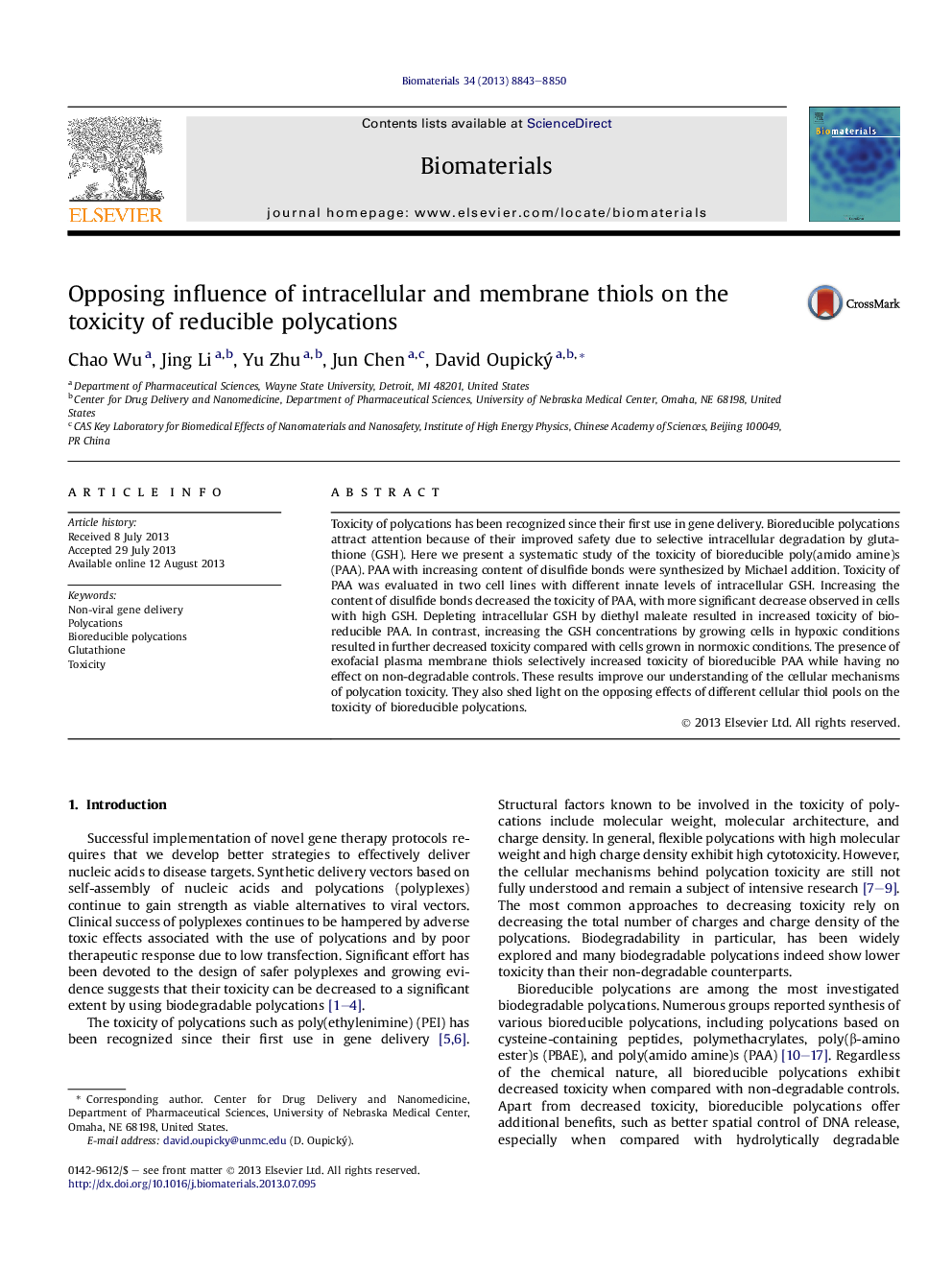| Article ID | Journal | Published Year | Pages | File Type |
|---|---|---|---|---|
| 10228022 | Biomaterials | 2013 | 8 Pages |
Abstract
Toxicity of polycations has been recognized since their first use in gene delivery. Bioreducible polycations attract attention because of their improved safety due to selective intracellular degradation by glutathione (GSH). Here we present a systematic study of the toxicity of bioreducible poly(amido amine)s (PAA). PAA with increasing content of disulfide bonds were synthesized by Michael addition. Toxicity of PAA was evaluated in two cell lines with different innate levels of intracellular GSH. Increasing the content of disulfide bonds decreased the toxicity of PAA, with more significant decrease observed in cells with high GSH. Depleting intracellular GSH by diethyl maleate resulted in increased toxicity of bioreducible PAA. In contrast, increasing the GSH concentrations by growing cells in hypoxic conditions resulted in further decreased toxicity compared with cells grown in normoxic conditions. The presence of exofacial plasma membrane thiols selectively increased toxicity of bioreducible PAA while having no effect on non-degradable controls. These results improve our understanding of the cellular mechanisms of polycation toxicity. They also shed light on the opposing effects of different cellular thiol pools on the toxicity of bioreducible polycations.
Related Topics
Physical Sciences and Engineering
Chemical Engineering
Bioengineering
Authors
Chao Wu, Jing Li, Yu Zhu, Jun Chen, David Oupický,
